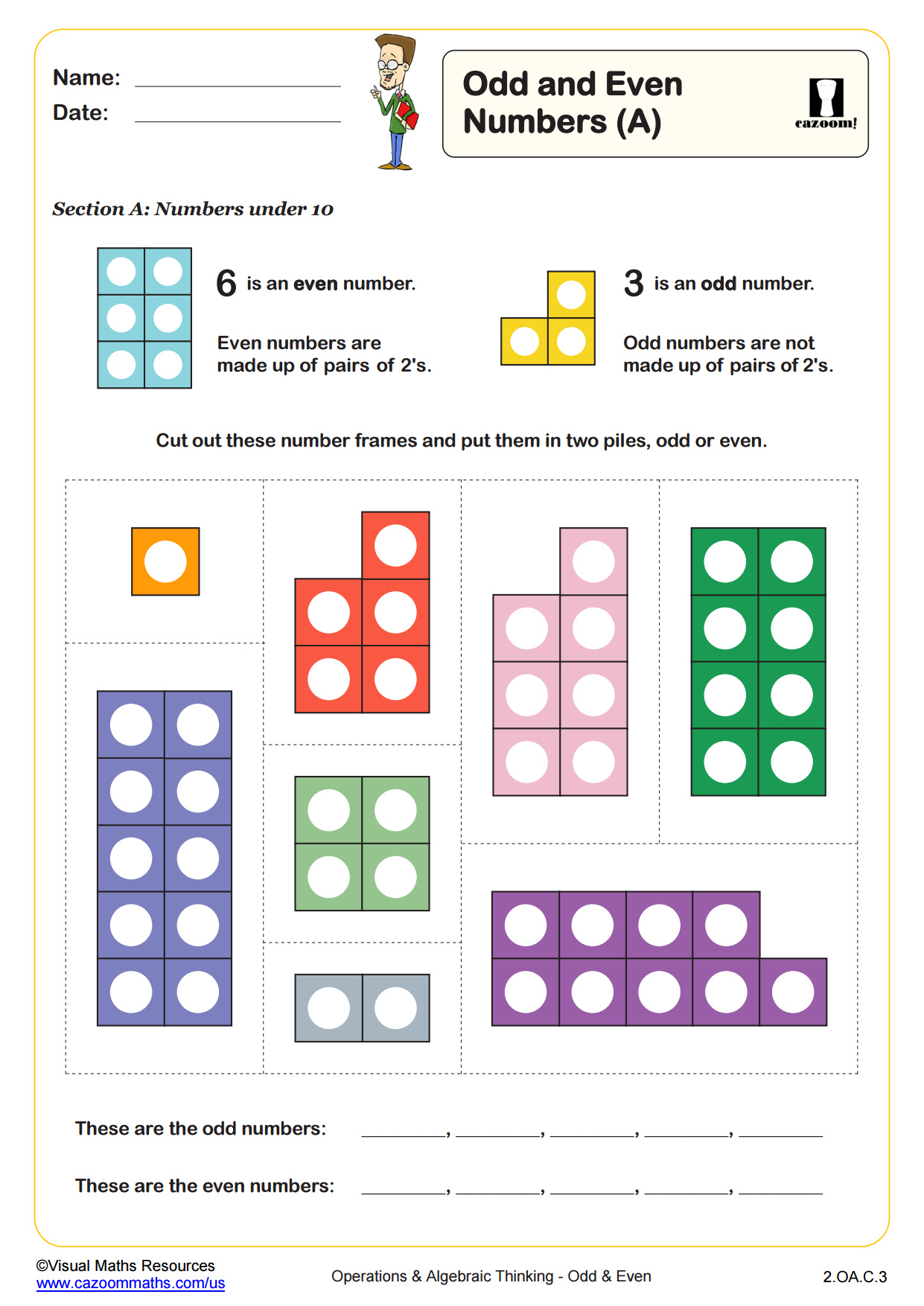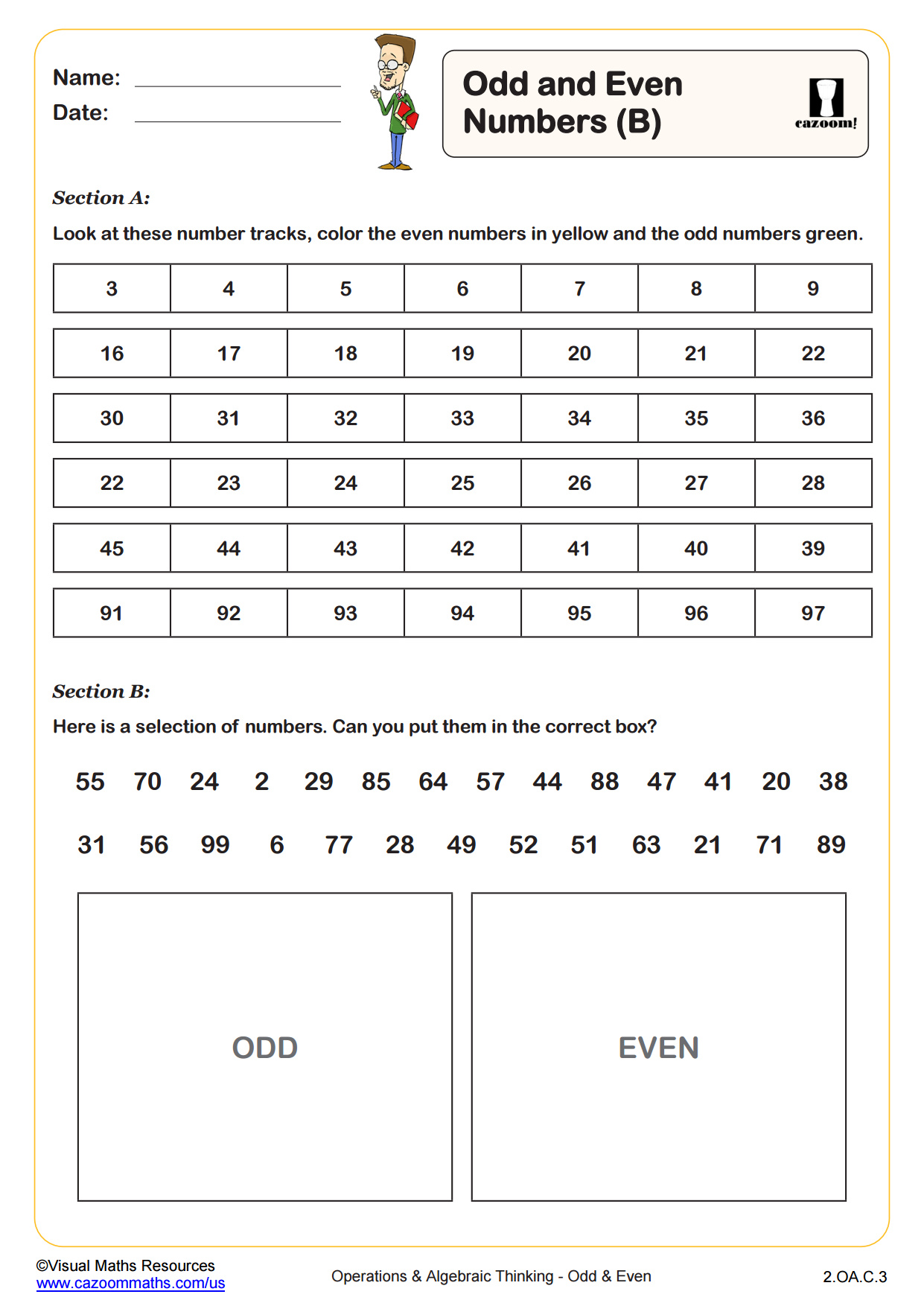Odd and Even Worksheets
Printable PDF Odd and Even Number Worksheets with Answer Keys
Download our specifically curated odd and even number worksheets in easy-to-print PDF format, each of which includes a separate answer sheet. The worksheets include different types of exercises related to these core operations and algebraic thinking skills. With visual supports and step-by-step tasks, these resources help children clearly understand the difference between odd and even numbers and apply what they’ve learned to real math problems.
What Are Odd and Even Numbers?
Even numbers are basically numbers that can be divided into two equal groups with no remainder (like 2, 4, 6), whereas odd numbers leave one left over (like 1, 3, 5). These two basic concepts help students learn about patterns, grouping, and early division. Understanding odd and even numbers supports skills such as skip counting, addition, multiplication, and problem-solving. These are key building blocks in the early grades that lead to more advanced math concepts.
Benefits of Our Odd and Even Worksheets
These worksheets help students strengthen number recognition and pattern identification. By using visual aids and structured activities, learners quickly gain the ability to distinguish between odd and even numbers. These resources also promote logical thinking and fluency in math facts, preparing students for operations and higher-level reasoning. With answer keys provided, learners and teachers can track progress easily.
Real-Life Uses of Odd and Even Numbers
Odd and even numbers are part of everyday activities like sharing objects, forming equal teams, or arranging chairs in rows. For instance, if a student tries to split 9 pencils between two people, one pencil is left over—showing that 9 is odd. Understanding this helps with real-life problem solving. Our worksheets use everyday examples to show how odd and even numbers apply to real situations that your young students can relate to.
What Should Students Know Before Starting?
Before learning about odd and even numbers, students should:
• Be able to count to at least 20
• Recognize and write numbers correctly
• Understand the concept of equal groups
• Use objects or visuals to represent numbers
These early math skills help children understand parity and prepare for more advanced number work.

